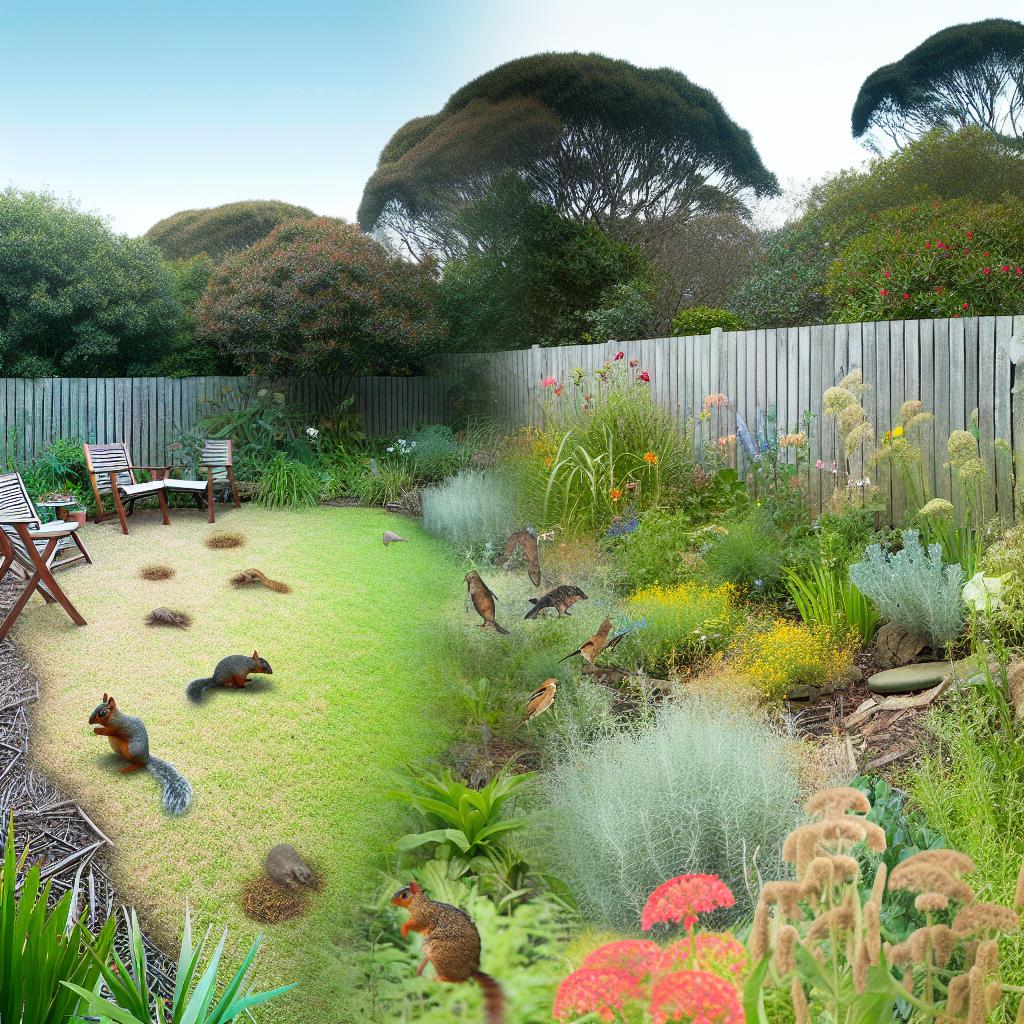
How to Rewild Your Garden for Native Wildlife
Understanding Rewilding and Its Importance
Rewilding is an innovative approach to gardening and landscape management, focusing on the restoration of natural ecosystems that have been disrupted by human activities. It involves allowing a space to transform over time to support a more balanced ecological environment, thereby promoting biodiversity. The aim is to create a sanctuary for native plants, wildlife, and insects that can help restore ecological balance and support a variety of species that are often displaced due to urbanization and land development. This process not only benefits the environment but can also provide aesthetic and educational benefits to those who cultivate these spaces.
Choosing the Right Native Plants
The selection of native plants is a foundational aspect of rewilding. Native plants are inherently equipped to handle local environmental conditions better than their non-native counterparts, making them more resilient and requiring less maintenance once established. They are perfectly attuned to the local soil, weather patterns, and the native wildlife that relies on them. To select the right plants, one should start with a detailed research of the indigenous flora. This research can generally be done through local botanical gardens, which often have extensive databases on native plant species and their ecological roles. Conservation organizations and university extension programs can also provide valuable insights.
When designing a rewilded landscape, consider using a mix of trees, shrubs, and perennials. This multi-layered approach not only enhances the aesthetic appeal of the garden but also fosters a more robust ecosystem by providing different structural habitats for wildlife. Moreover, selecting plants with varied blooming periods ensures that food sources for pollinators are available throughout different seasons. This continuity is crucial for maintaining the health of species that depend on nectar and pollen, such as bees and butterflies.
Creating Habitats for Wildlife
A rewilded garden can thrive when it offers diverse habitats for local fauna. Rather than manicuring every inch, integrating natural elements such as logs, rocks, and leaf piles can create shelters and foraging grounds for small animals and insects. These natural structures can support beneficial insects like beetles and ground-nesting bees, which are essential for pollination and pest control.
Moreover, the presence of water features will significantly enhance the attractiveness of the garden for various species. Installing simple ponds, birdbaths, or even just strategically placed saucers of water can create new habitats that support reptiles, amphibians, and birds. To cater to the needs of avian visitors, nesting boxes tailored to the species native to your area can provide safe breeding sites, increasing the chances of seeing diverse bird species throughout the year.
Minimizing Chemical Use
The use of chemicals such as pesticides and herbicides poses a significant threat to a rewilded garden. These substances can degrade the ecosystems by harming not just the targeted pests, but also beneficial organisms that contribute to the ecosystem’s health. Therefore, a commitment to minimized chemical use is crucial. Natural pest control methods can be incredibly effective and sustainable. For instance, predator insects, like ladybugs, can naturally reduce pest populations without damaging beneficial species. Additionally, natural remedies, such as neem oil or insecticidal soaps, can target specific pests without causing broad ecological harm.
It is also beneficial to encourage ecological balance by fostering conditions that naturally regulate pest populations. This can include ensuring diverse plantings and habitats that support predators of common pests. Another critical component is regular monitoring of plants to catch any infestations early before they necessitate drastic interventions.
Helping Your Rewilded Garden Thrive
Caring for a rewilded garden is fundamentally different from traditional gardening techniques. The emphasis is on promoting and observing natural processes rather than enforcing rigid control. This approach involves allowing nature to guide the maintenance practices to some extent. Monitoring is vital to ensuring that the species within the garden maintain a healthy balance.
Regular assessments should be conducted to evaluate the health of both the flora and fauna and determine if any interventions are needed. These might include additional planting to introduce a new species that has become important to the ecosystem or making minor habitat adjustments to support new wildlife that has been attracted to the garden.
Over time, a rewilded garden should increasingly require less human intervention as natural balances become established. However, some level of interaction is necessary to manage invasive species or other threats. Learning from natural processes and being adaptive in management strategies are key to thriving rewilded spaces.
For more comprehensive advice on cultivating native plants and creating conducive wildlife habitats, consider consulting resources from established organizations such as the Royal Horticultural Society. They offer invaluable information and guidance that is particularly adapted to specific regions, assisting both beginners and seasoned gardeners in creating vibrant, sustainable environments.
In conclusion, rewilding paves the way towards rebuilding the natural world right in the spaces connected to our living environments. With careful planning, commitment to natural processes, and patience, anyone can transform a conventional garden into a thriving ecosystem that honors and preserves biodiversity. As people become more aware of their environmental impact, rewilding serves as a meaningful and impactful act in the pursuit of ecological sustainability.